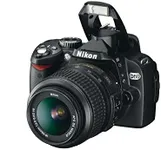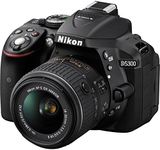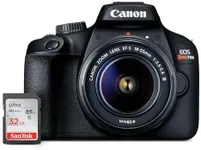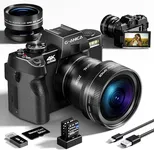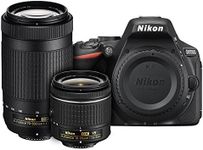Buying Guide for the Best Affordable Dslr Cameras
Choosing the right DSLR camera can be a daunting task, especially if you're new to photography or looking for an affordable option. The key is to understand the various specifications and how they align with your needs. By focusing on the most important features, you can make an informed decision that will help you capture stunning photos without breaking the bank.Sensor SizeThe sensor size in a DSLR camera determines the quality of the images it can produce. Larger sensors capture more light and detail, resulting in better image quality, especially in low-light conditions. Common sensor sizes include Full Frame, APS-C, and Micro Four Thirds. Full Frame sensors are the largest and offer the best image quality, but they are also more expensive. APS-C sensors are smaller but still provide excellent quality and are more affordable, making them a popular choice for beginners and enthusiasts. Micro Four Thirds sensors are even smaller and more compact, suitable for those who prioritize portability. Consider your photography needs and how much you value image quality versus portability when choosing a sensor size.
MegapixelsMegapixels refer to the resolution of the camera's sensor, indicating how many millions of pixels the camera can capture. Higher megapixels mean more detail in your photos, which is important if you plan to print large images or crop your photos extensively. For most casual photographers, a camera with 16-24 megapixels is sufficient, providing a good balance between image quality and file size. If you are a professional or need extremely high-resolution images, you might look for cameras with 30 megapixels or more. However, keep in mind that higher megapixels also require more storage space and can slow down your camera's performance.
ISO RangeThe ISO range of a camera determines its sensitivity to light. A wider ISO range allows you to shoot in various lighting conditions, from bright daylight to low-light environments. Lower ISO values (e.g., 100-400) are ideal for well-lit scenes and produce minimal noise, while higher ISO values (e.g., 1600 and above) are useful in low-light situations but can introduce more noise into your images. If you often shoot in low-light conditions, look for a camera with a higher maximum ISO range. For general photography, a camera with an ISO range of 100-3200 should be sufficient.
Autofocus SystemThe autofocus system in a DSLR camera determines how quickly and accurately the camera can focus on a subject. This is particularly important for capturing fast-moving subjects, such as in sports or wildlife photography. Cameras with more autofocus points and advanced tracking features provide better performance in these situations. For general photography, a basic autofocus system with fewer points may be adequate. If you plan to shoot action or need precise focus, look for a camera with a more sophisticated autofocus system.
Continuous Shooting SpeedContinuous shooting speed, measured in frames per second (fps), indicates how many photos a camera can take in a burst. This is crucial for capturing fast-moving subjects or moments where timing is critical. Entry-level DSLRs typically offer 3-5 fps, which is sufficient for casual photography. If you are into sports, wildlife, or any fast-paced photography, you might want a camera with a higher fps, such as 6-10 fps or more. Consider your shooting style and how often you need to capture rapid sequences when evaluating this spec.
Video CapabilitiesMany DSLR cameras also offer video recording capabilities, which can be a valuable feature if you plan to shoot videos in addition to still photos. Key factors to consider include the maximum resolution (e.g., Full HD 1080p or 4K), frame rates, and additional features like microphone input and image stabilization. For casual video recording, Full HD resolution is usually sufficient. If you are serious about videography, look for a camera with 4K resolution and advanced video features. Think about how often you will use the video function and what quality you need for your projects.
Build Quality and ErgonomicsThe build quality and ergonomics of a DSLR camera affect how comfortable it is to use and how well it can withstand different shooting conditions. Entry-level cameras are often made of plastic and are lighter, making them easier to carry around. More advanced models may have a metal body and weather sealing, providing better durability and protection against the elements. Consider how and where you will be using your camera. If you need a lightweight and portable option for casual use, an entry-level model may be sufficient. For more demanding environments, look for a camera with better build quality and weather resistance.
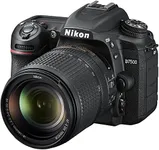
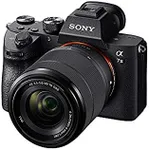
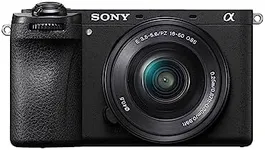
![Canon DSLR Camera [EOS 90D] with Bu](https://images-proxy.bestreviews.guide/kFEi5KP2PYJ3wMXMQ_Zv7U27skM=/0x150/https://m.media-amazon.com/images/I/41CT8Bz8kQL._AC_CX679_.jpg)

